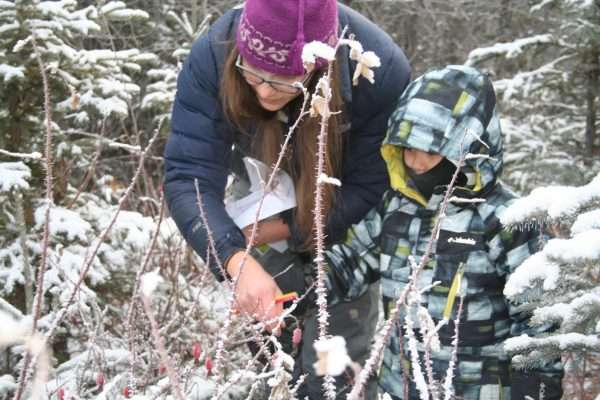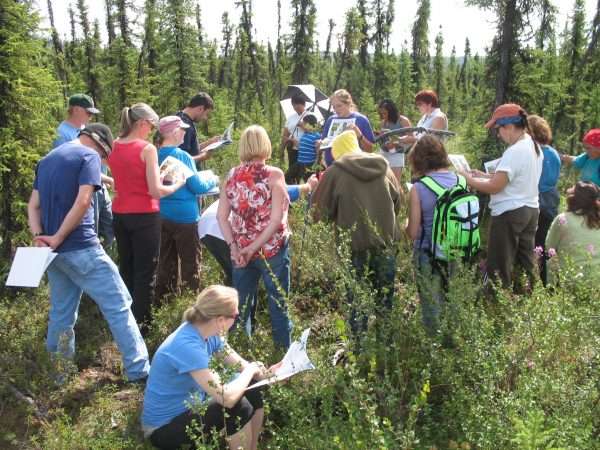Berry research project seeks Alaskan volunteer citizen scientists

Across Alaska, berry harvests have begun in earnest—and, this year, so has a project in which Alaskans will help track their berry patches scientifically.
The new National Science Foundation project, dubbed "Winterberry," aims not only to engage Alaskans in research on berry resources but also to find ways to make the findings more valuable to communities.
"Berries are an important resource for so many of us," said principal investigator Katie Spellman, a postdoctoral researcher at the University of Alaska Fairbanks International Arctic Research Center. "This work is an attempt to empower participation in scientific research and make it more accessible and useful to Alaska and Arctic communities."
Spellman and Winterberry project partners will work with communities and youth groups across the state in two ways, both based on the understanding that personal connections are important for learning, doing and using science.
First is the work with volunteers, with an emphasis on youth groups, to track berries as they ripen and disappear through the fall and winter. Project leaders will train volunteers to monitor berries and collect data. They will analyze data together and think of ways to plan for uncertain future berry harvests.
Second, after-school clubs featuring storytelling sessions and mentors will prompt creative thinking about the science. The clubs will be run in partnership with Alaska 4-H, the Global Learning and Observations to Benefit the Environment program and faculty from UAF's School of Education and Department of English. Stories will come from students, scientists, community members, elders and other project participants.

The approach reflects the need for more stimulating and interdisciplinary thinking about science, Spellman said.
"Scientists have gotten too far from sharing stories that are meaningful to people," she noted. "But it's been coming back around as science communication has become more important. In the end, what makes science usable are the stories you can tell from the data and observations."
Investigators recognize the need for community participants to feel sustained human contact as a part of the science, and to understand that local needs and conditions drive the project.
"There is an underlying motivation here that people all over Alaska are noticing greater variability in berry harvests, and less reliability," said Christa Mulder, a project collaborator and professor at UAF's Institute of Arctic Biology. "Through this work, we can build and strengthen existing data sets by expanding out from Fairbanks to cover our large and very diverse state."
Work will begin in the current berry harvest season. Organizers are seeking partners among individuals, families, schools and youth clubs.
The first public training session for Winterberry partners will occur Saturday, Aug. 26. If your organization is interested in participating in this project, please visit alaska.edu/winterberry/" target="_blank">sites.google.com/alaska.edu/winterberry/ .
Provided by University of Alaska Fairbanks





















